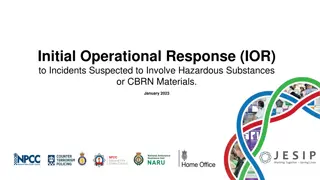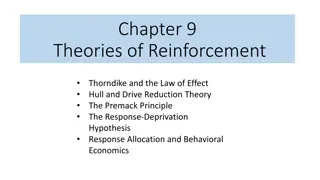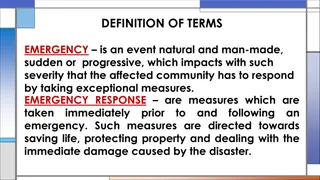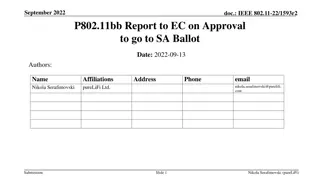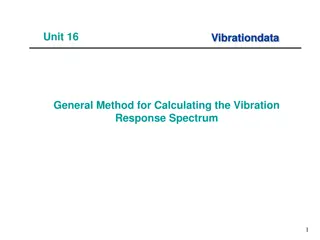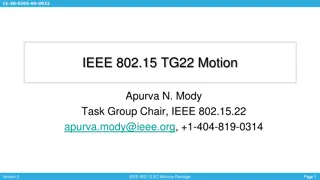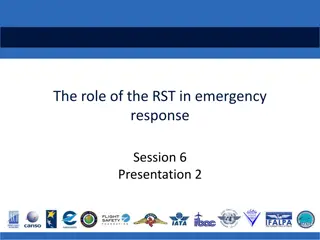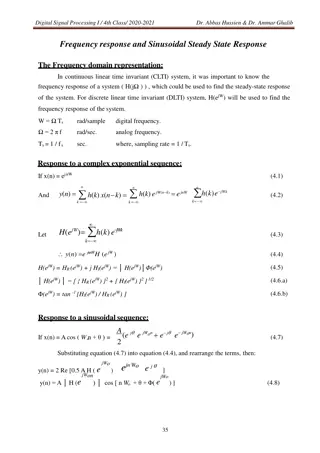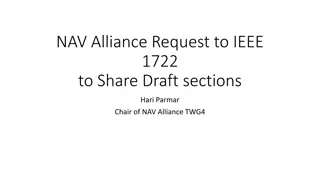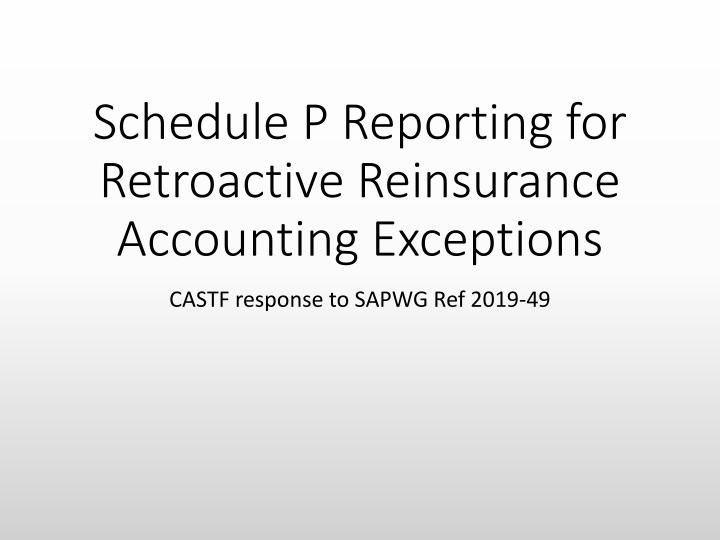
Retroactive Reinsurance Accounting Exceptions: CASTF Response to SAPWG Ref. 2019-49
Explore insights on schedule P reporting for retroactive reinsurance accounting exceptions and how the industry is addressing ambiguities in accounting requirements. Understand SSAP 62R guidelines and the nuances of P&C reinsurance accounting, including deposit accounting and prospective reinsurance treatment.
Download Presentation

Please find below an Image/Link to download the presentation.
The content on the website is provided AS IS for your information and personal use only. It may not be sold, licensed, or shared on other websites without obtaining consent from the author. If you encounter any issues during the download, it is possible that the publisher has removed the file from their server.
You are allowed to download the files provided on this website for personal or commercial use, subject to the condition that they are used lawfully. All files are the property of their respective owners.
The content on the website is provided AS IS for your information and personal use only. It may not be sold, licensed, or shared on other websites without obtaining consent from the author.
E N D
Presentation Transcript
Schedule P Reporting for Retroactive Reinsurance Accounting Exceptions CASTF response to SAPWG Ref 2019-49
December 7, 2021, Draft CASTF Subgroup Gordon Hay, FCAS, MAAA, CPCU Nebraska Miriam Fisk, FCAS, FCAS, MAAA, ASA Texas Tom Botsko, ACAS Ohio NAIC Staff Robin Marcotte Kris DeFrain, FCAS, MAAA, CPCU
COPLFRs May 2019 Letter to CASTF and SAPWG Asserted ambiguity in the accounting/reporting requirements for affiliated retroactive reinsurance agreements that meet the requirements for Prospective Reinsurance Accounting treatment Attributed materially different presentations in Schedule P by different companies to that ambiguity Recommended that this asserted ambiguity be addressed by improved clarity in SSAP 62R and the Annual Statement Instructions, given that industry Schedule P is utilized for risk-based capital (RBC) purposes as well as other purposes
P&C Reinsurance Accounting (SSAP 62R) Deposit Accounting (paragraphs 40-41) Used when the agreement does not transfer risk Paragraph 37 requires harsher version of deposit accounting to be used for affiliated retroactive reinsurance involving a gain in surplus to the cedant does not allow the deposit asset to be admitted Prospective Reinsurance Accounting (paragraphs 30-32) Net premium = Gross premium Ceded premium Net loss and LAE = Gross loss and LAE Ceded loss and LAE Retroactive Reinsurance Accounting (paragraphs 33-39) Ceding entity: loss and LAE reserves Exhibits & Schedules do not take credit for retroactive reinsurance Assuming entity: loss and LAE reserves Exhibits & Schedules exclude assumed retroactive reinsurance Balance sheet write-in amounts: Amount of retroactive reinsurance ceded (contra-liability) or assumed (liability) Special surplus from retroactive reinsurance Income statement write-in: Retroactive reinsurance gain/loss included under Other Income
Retroactive Reinsurance Accounting Exceptions (paragraph 36) Exceptions accounted for as prospective reinsurance agreements unless otherwise provided in SSAP 62R a. Structured settlement annuities b. Novations c. Commutations d. Intercompany reinsurance agreements with no surplus gain e. Property/casualty run-off agreements
36.a: Structured settlement annuities Definition & Requirements Annuities for individual claims purchased to implement settlements of policy obligations Accounting Accounting guidance is provided in SSAP 21R (Other Admitted Assets) and SSAP 65 (P&C Contracts) Not specified in SSAP 62R, other than being an exception to retroactive reinsurance accounting
36.b: Novations Definition & Requirements Original insurer s obligations are completely extinguished, resulting in no further exposure to loss arising on the business novated Parties are not affiliates (or if affiliates, that the transaction has the prior approval of the domiciliary regulators of the parties) The accounting for the original reinsurance agreement will not be altered from retroactive to prospective Prospective Reinsurance Accounting SSAP 62R, paragraph 39 Original insurer reports amounts paid as reduction of written and earned premiums, and unearned premiums to the extent that premiums have not been earned Novated loss and LAE reserves are written off through accounts, exhibits, and schedules in which they were originally recorded Assuming insurer reports amounts received as written and earned premiums, and obligations assumed as incurred losses
36.c: Commutations Definition & Requirements Complete and final settlement and discharge of all present and future obligations between the parties arising out of the (commuted portion of the) original agreement Accounting SSAP 62R, paragraphs 94-97 Commuted balances are written off through accounts, exhibits, and schedules in which they were originally recorded Any net gain or loss (to either party) is reported as underwriting income Cedant in the commuted agreement records cash received as negative paid loss
36.d: Intercompany reinsurance, without surplus gain Definition & Requirements Companies are 100% owned by a common parent or ultimate controlling person. There is no surplus gain to the ceding entity as a result of the transaction. Prospective Reinsurance Accounting Note: This exception is the focus of the COPLFR letter. Explicitly shall be accounted for as prospective reinsurance agreements
37: Cession to an affiliate, with surplus gain Definition & Requirements Companies are affiliated or under common control (as defined in Appendix A-440) Retroactive reinsurance results in surplus gain to the ceding entity (with or without risk transfer) Accounting SSAP 62R, paragraph 37 Requires harsher version of deposit accounting Consideration paid is recorded as a deposit and reported as a non- admitted asset No deduction made from ceding entity s loss and LAE reserves
36.e: Property/casualty run-off agreements Definition & Requirements Can only cover liabilities relating to line(s) of business or specific market segments no longer actively marketed by the transferring entity Transferring entity remains primarily liable to the policyholder under the original contracts Agreements between affiliates or insurers under common control are not eligible for this exception Accounting treatment must be approved by the domiciliary regulators of the transferring entity and the assuming entity Cannot be cancelable by either party for any reason Accounting SSAP 62R, paragraphs 102-105 Transferring entity records consideration paid to the assuming entity as a paid loss Assuming entity records consideration received as negative paid loss Transferring entity records increase to ceded reinsurance recoverable for the amount of the transferred reserve Assuming entity reports the business in the same lines of business and same level of detail as reported by the original insurer
Premium and Losses Earned premium is on a calendar-year basis. Losses incurred should be assigned to the year in which the event occurred that triggered coverage under the contract. This may be a date of accident (occurrence policies), a date of report (claims-made policies), a policy issue date (tail policies), or a date of discovery (fidelity and surety).
Retroactive Reinsurance Retroactive reinsurance should not be reflected in Schedule P. The transferor in such an agreement must record, without recognition of the retroactive reinsurance, its loss and loss adjustment expense reserves on a gross basis on its balance sheet and in all schedules and exhibits. The transferee in such an agreement must exclude the retroactive reinsurance from its loss and loss expense reserves and from its schedules and exhibits. Note: This is consistent with SSAP 62R, paragraph 34.
Intercompany Pooling If the reporting entity participates in a pooling agreement, show only its share of the business, not the total for all participants. When changes to pooling agreements impact prior accident years, historical data values in Schedule P Parts, 1 through 6 should be restated based on the new pooling percentage. This should be done to present meaningful development patterns in Schedule P. When pooling changes only impact future accident years, no restatement of historical values should be made. Note: This differs from SSAP 62R, paragraphs 36d and 37.
Disconnect between Schedule P Pooling Instructions and SSAP 62R Intercompany pooling agreements with a retroactive component generally reallocate surplus among the members. SSAP 62R, paragraph 36d only allows prospective accounting if there is no gain in surplus to the ceding entity. To prevent surplus manipulation amongst the group and/or backdoor dividends, SSAP 62R, paragraph 37 requires harsher method of deposit accounting if there is a gain in surplus to the ceding entity. CASTF Discussion Do we want to address this disconnect? If so, how? One Potential Proposal Add intercompany pooling agreements to the exceptions listed in SSAP 62R, paragraph 36.
Applying Retroactive Reinsurance Exception in Schedule P Schedule P Instructions are explicit for Intercompany Pooling Agreements, including when the agreement has a retroactive component When changes to pooling agreements impact prior accident years, historical data values in Schedule P Parts, 1 through 6 should be restated based on the new pooling percentage. Schedule P Instructions provide no explicit guidance for any of the SSAP 62R, paragraph 36 exceptions Esp., paragraph 36.d. LPT s create Schedule P distortions LPT ceded losses are reported by accident year Schedule P Instructions note premium should be calendar year earned premium (not allocated to prior years) Agree with COPLFR that 6 GEICO companies did allocate Cal Year 2014 ceded LPT premium to prior years on Schedule P. 100% ceded loss ratios, with largest ceded balances in most recent Acc Years, produced a very favorable-looking net loss ratio trend. Most have recorded LPT premium in current calendar year on Schedule P. Cedant s result is abrupt favorable prior years development offset by high current Acc Year net loss ratio. Reinsurer s result is abrupt adverse prior years development offset by low current Acc Year net loss ratio.
Proposal: Clarify Schedule P Instructions for prospective reporting exceptions Proposal The Schedule P Instructions are silent regarding novations and paragraph 36d agreements, which both receive prospective accounting treatment. Schedule P Instructions should provide explicit guidance for the SSAP 62R, paragraph 36c and 36d exceptions. There will be distortions in Schedule P when applying prospective accounting to retroactive reinsurance. Add Schedule P reporting instructions for the exceptions listed in SSAP 62R, paragraph 36c and 36d.
Caveats Clarity in SSAP 62R and Schedule P Instructions should reduce but will not eliminate variations in Schedule P presentation or distortions to (industry) RBC. Intentional variations observed in Schedule P presentation for paragraph 36d exceptions were due to states direction, not ambiguity in SSAP 62R. Variations may be unintentional, particularly when the cedant and its domicile are not accustomed to prescribed accounting treatment for exceptions. Paragraph 36d agreements have been used to cede material portfolios to an affiliate with the same ultimate owner, but outside the NAIC financial reporting system, where: Subsequent development is omitted from the Industry Schedule P data Retrocession may proceed without deferred surplus recognition
Other Possible Actions Related to SSAP 62R, paragraph 36d exceptions: Stop prescribing prospective reinsurance accounting Specify a method for allocation of premium to prior years instead of being reported in the current calendar year Expand Schedule P interrogatories or Note 23 disclosures to provide more information about these agreements Add a Schedule P line of business Unacceptable option: Specify that the consideration paid is reported as loss (positive paid loss by cedant, negative paid loss by assuming entity) instead of premium This is commutation accounting and is not consistent with prospective accounting, although it has been advocated by some companies. Add Schedule P reporting instructions for the SSAP 62R, paragraph 36 exceptions that don t receive prospective accounting treatment (Structured Settlements, Commutations, and qualifying Run-off agreements) Discuss whether SSAP 62R, paragraph 37 is overly punitive

